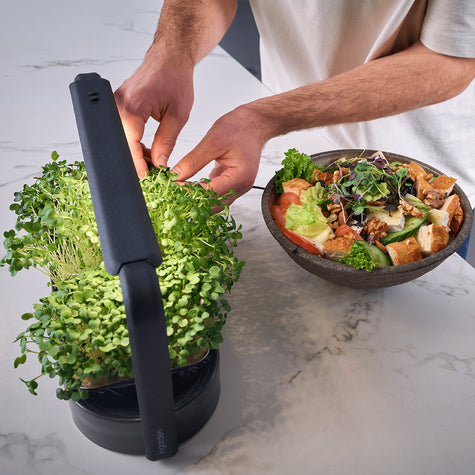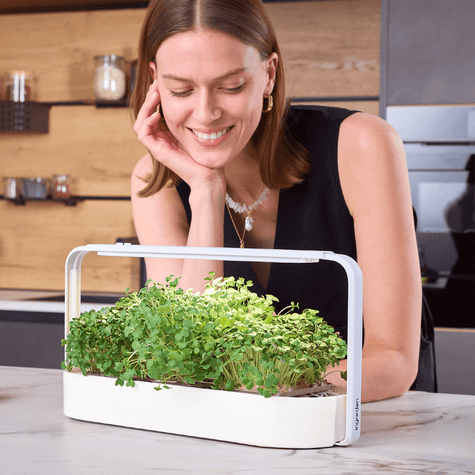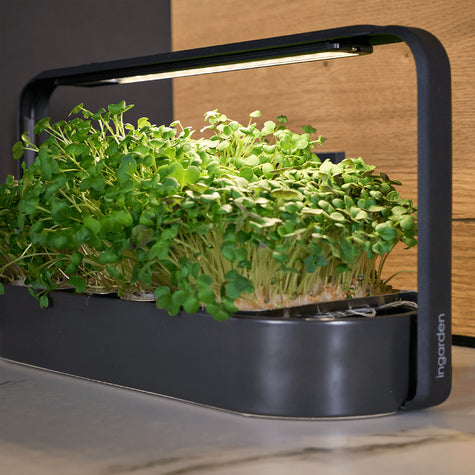Why is growing microgreens at home crucial for our future ? Our bodies need essential nutrients from food every day so we can feel energetic, stay warm, grow, and regenerate. In the last 100 years alone, the world's population has quadrupled from 2 to 8 billion people. As the global population continues to grow, we must take care of our existing arable land and find new, innovative solutions that support our future food security.
Every year, the United Nations celebrates World Soil Day to raise awareness of the importance of healthy soil for our future food security. Healthy soil is the foundation of life on Earth, which is why maintaining soil fertility is essential. Fertile soils help us ensure global food supply and food security. While governments, businesses, and NGOs must work together to support healthy soils for the future, we have our own way of reducing soil pressure: through hydroponics .
What is hydroponics?
Hydroponics, also known as hydroculture, refers to the cultivation of plants without soil – instead, liquid, gravel, or sand are used. Hydroponic technology supports rapid plant growth without degrading the soil. In recent years, an increasing number of vertical farms have sprung up in cities, harnessing the power of hydroponic technology. On vertical farms, food can be grown year-round because they are located indoors and water and light levels are controlled. This protects the plants from sudden weather changes and climate shifts.
You can think of an ingarden as your very own vertical farm at home. The ingarden also uses hydroponic technology: the sustainable pads only need water and LED light to germinate. By using this technology and growing microgreens at home, you're helping to reduce soil pressure and support future food security. You're also reducing emissions and plastic consumption generated by conventional food supply chains.
Why nutrient density is important
Another reason why homegrown microgreens are crucial for our future food security is their nutrient density . Microgreens are truly packed with nutrients: red cabbage microgreens, for example, contain up to 260 times more nutrients per gram compared to regular red cabbage. By growing them at home, we can obtain the vital nutrients we need by consuming something tiny, instead of relying solely on conventional farming and overstretched farmland.
At ingarden, we are proud that hydroponics and sustainability are at the heart of everything we do. Microgreens grown directly at home support a healthy future.







